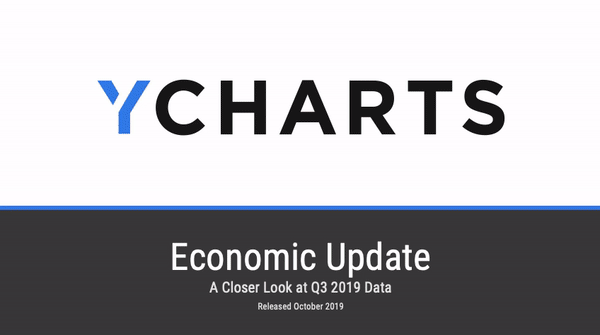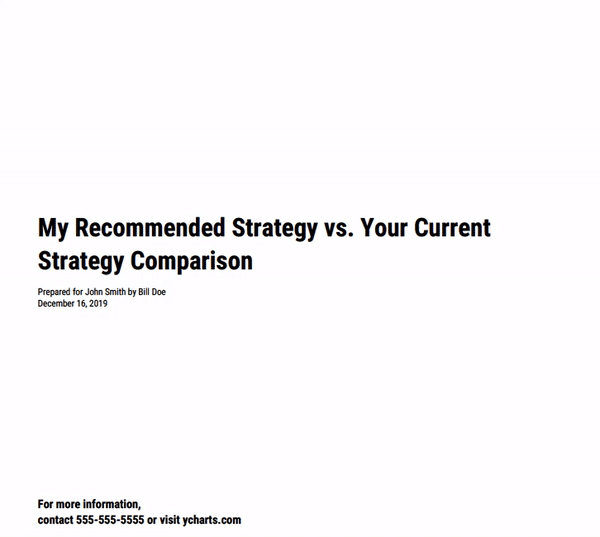How To Create Better Touchpoints with Clients
While Henry Ford famously told Model T buyers, “you can have any color as long as it’s black,” today’s consumers expect a lot more when it comes to customer service, and especially personalization.
If you’re a Netflix subscriber, you’ve probably enjoyed the personalized recommendations for new TV shows and movies that are similar to the content you’ve previously watched. Netflix has mastered leveraging user data and behavior to provide their customers with a better experience that keeps them coming back for more.
Just like Netflix collects data on users’ watching habits then makes recommendations they’ll likely enjoy, advisors can leverage knowledge of their clients to communicate in a more personalized and meaningful way. In fact, advisors and planners already have access to the information, such as client attributes and portfolio data, needed to personalize their client experience.
To find out exactly what clients want when interacting with their advisor, YCharts conducted a survey and uncovered the areas where clients feel their advisor could be doing more.
What your clients told us…
We asked more than 650 individuals, all employing a financial advisor or planner, how often they hear from their advisor, what kind of information they’d like their advisor to send them, and how style and frequency of communication affects their relationship with their advisor.
We’ve outlined three key findings below, and you can access the survey in its entirety here: How Can Advisors Better Communicate with Clients?
Clients do not feel engaged — The majority of survey respondents, and nearly half of high-AUM respondents, say they hear from their advisor infrequently, and more than a quarter feel that their advisor contacts them “very infrequently.”
Clients want personalized communications — Ranging from advisors’ perspectives on the market to portfolio-specific updates, when clients hear from their advisors, they want content that is hyper-relevant to them.
Success can be directly impacted by your communications strategy — Clients resoundingly answered that the frequency and style of their advisors’ communication directly impacts their confidence in a financial plan, the likelihood of retaining their advisor, and their willingness to refer their advisor to family and friends.
The Advisor-Client Communication Framework
Following the survey and the insights derived from its results, we began to explore how advisors can create more meaningful touchpoints with their clients, as well as how advisors can strategically approach their client communications strategy.
Whether emailing your firm’s annual letter to every client, or calling an individual to discuss a nuanced tax implication, we found that all advisor-client communications are defined by one of two cadences: Scheduled or Ad Hoc, and one of two audiences: Personalized or Broadcast.
The Advisor-Client Communication Framework, defined with examples below, combines the cadence and audience factors into a two-by-two matrix to help advisory and planning firms organize their efforts and identify gaps in how they engage with clients.
A helpful exercise: Re-create the matrix below and populate it with the communication strategies you’re already using. Are your efforts homogenous and outdated? Which quadrants are empty? Where do you see opportunities to create new touchpoints with clients and prospects?
Using YCharts to create more meaningful touchpoints
Are you wondering exactly what steps you can take to improve your client communications? YCharts can help.
We know that regardless of advisors’ good intentions, time and scalability are often barriers to creating more, better touch points with clients. We also know that the subject matter of advisor-client communications, like financial health, taxes, and portfolio performance, can be difficult to relay to clients.
For these reasons and more, we’ve built YCharts tools and capabilities that help advisors communicate their value proposition, scale their client outreach, and ultimately, create a better experience for their clients.
Below are examples of several YCharts features, addressing each quadrant of the Communications Framework, that advisors use to solidify their value proposition when meeting with clients and prospects.
Read More:
Advisors: Do Clients Perceive Your Value?
YCharts Enables TD Advisors to Make Smarter Investment Decisions
The Plight of the Modern Financial Advisor: Time is Not on Their Side
Broadcast / Scheduled
Broadcast/Scheduled communications occur at regular intervals, contain broadly relevant information, and are sent to all, or many, of your clients and prospects.
Writing a blog to relay your perspectives on the economy, then sharing the post with your clients via email or LinkedIn is an example of “Broadcast/Scheduled” communication. Advisors leverage YCharts’ Economy Summary Deck, a white-labeled powerpoint distributed to YCharts users every quarter, to pull charts and visuals that help simplify and explain economic concepts.

Broadcast / Ad Hoc
Broadcast/Ad Hoc communications are sent to all or many clients and prospects, but instead of being planned, they occur when needed or in response to other events.
When the market takes an unexpected turn for the worse and you reach out to your clients to assure them they can withstand the downturn, you are using Broadcast/Ad Hoc communication. The Fundamental Charts tool is used to visually communicate concepts and answer the why? behind a stock or fund’s performance.
For example, the chart below shows how energy stocks move in high correlation to oil prices and helps make concepts more tangible in the minds of clients and prospects.
Personalized / Scheduled
Advisors use Personalized/Scheduled communication when reaching out to one or a few clients in a regular or pre-defined cadence.
If you have a client or group of clients that own a concentrated stock position from their employer, and you’re working with them to gradually reduce that position over time, this falls into the Personalized/Scheduled bucket. Advisors use YCharts’ extensive security data, like the Procter & Gamble (PG) valuation comparison below, to monitor and evaluate stocks, mutual funds, ETFs, and more.
Then, charts like the one below can be created to tell clients that P&G is trading at relatively high prices compared to peer companies, and make a data-driven recommendation to hold or sell the stock.
Personalized / Ad Hoc
Personalized/Ad Hoc communication occurs when advisors interact directly with one or a few clients, either before or in response to an event that affects only that defined group.
When preparing a prospect proposal, or trying to increase your wallet-share of a high-net-worth client, any presentation or recommendations made to that individual are Personalized/Ad Hoc. YCharts’ Side by Side Portfolio Comparison reports contrast two portfolios’ performance, fees, exposures, and more, and advisors use them to highlight the benefits of their strategy compared to others’.

Upgrade your communications strategy today
The survey of over 650 individuals working with an advisor or planner revealed a disconnect between how advisors communicate with their clients and how those same clients wish to be communicated with.
To assess the extent of that gap, advisors can leverage the Advisor-Client Communication Framework and identify opportunities to create more meaningful touch points and justify their value prop.
With YCharts, thousands of advisors and planners are using visual analysis to make smarter investment decisions and demonstrate the value of their portfolio strategies. If you can benefit from improved communication with clients and prospects, visit ycharts.com, schedule time with a product specialist, or call us at (866) 965-7552 to learn more.
Next Article
Introducing Model Portfolio Overview ReportsRead More →
